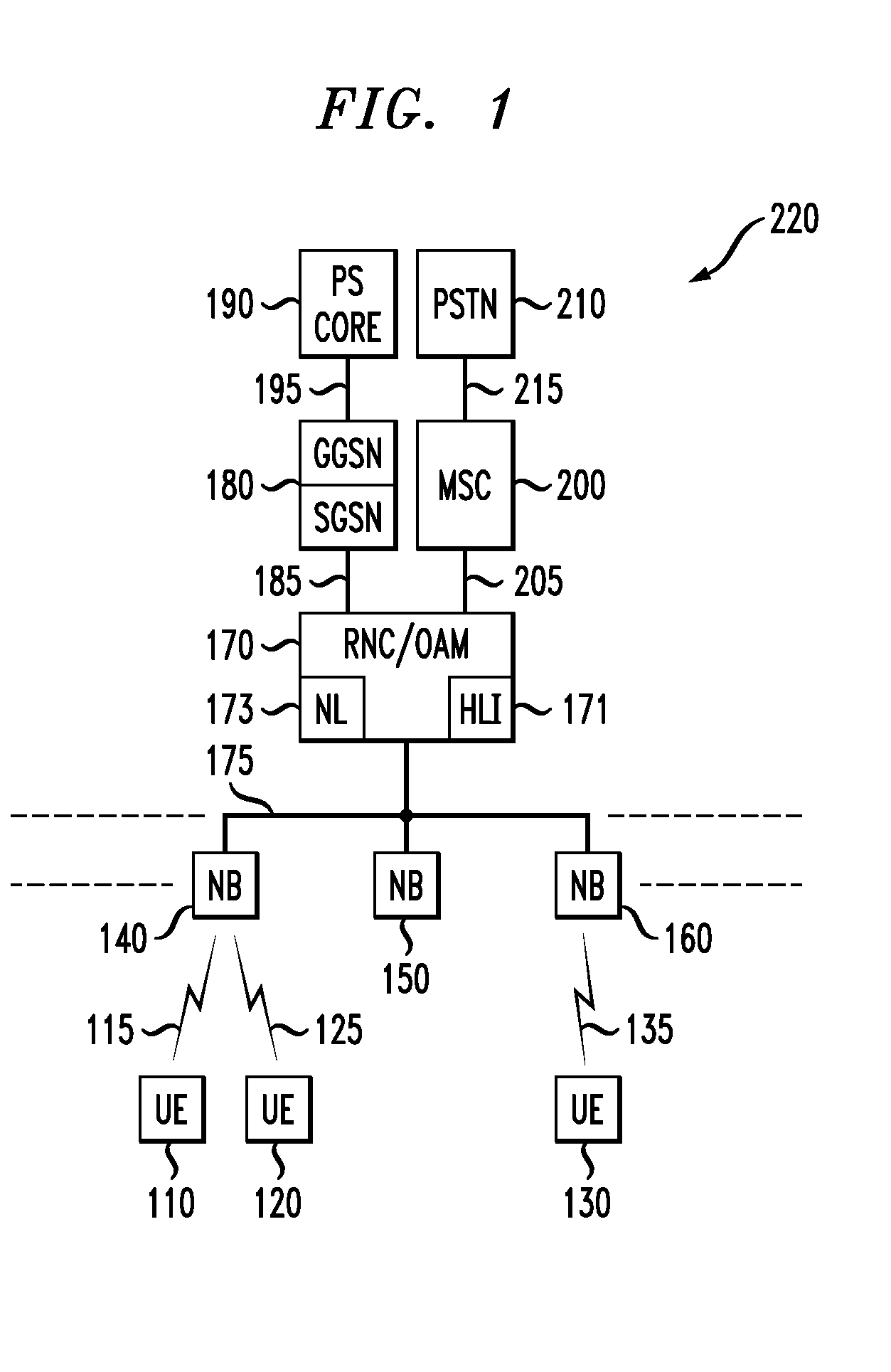Base station control
a technology of base station and control method, which is applied in the direction of power management, climate sustainability, sustainable buildings, etc., can solve the problems of unsatisfactory existing techniques, unnecessarily waste of power, and long power supply duration, so as to reduce transmission power and reduce user equipment coverage
- Summary
- Abstract
- Description
- Claims
- Application Information
AI Technical Summary
Benefits of technology
Problems solved by technology
Method used
Image
Examples
Embodiment Construction
[0034]FIG. 1 shows units of a telecommunications network 220 according to one embodiment. User equipment 110, 120, 130 roam through the telecommunications network 220. A number of base stations 140, 150, 160 are provided which are distributed geographically in order to provide a wide area of coverage to user equipment. Each base station 140, 150, 160 may support one or more sectors, as will be described in more detail below. When user equipment 110, 120, 130 is within a sector supported by one of the base stations 140, 150, 160 then communications may be established between the user equipment and the associated base station over an associated radio link. For example, user equipment 110 establishes a radio link 115 with the base station 140. Likewise, user equipment 120 establishes a radio link 125 also with the base station 140. User equipment 130 may be at a geographically different location and establishes a radio link 135 with the base station 160. Of course, it will be appreciat...
PUM
 Login to View More
Login to View More Abstract
Description
Claims
Application Information
 Login to View More
Login to View More - R&D
- Intellectual Property
- Life Sciences
- Materials
- Tech Scout
- Unparalleled Data Quality
- Higher Quality Content
- 60% Fewer Hallucinations
Browse by: Latest US Patents, China's latest patents, Technical Efficacy Thesaurus, Application Domain, Technology Topic, Popular Technical Reports.
© 2025 PatSnap. All rights reserved.Legal|Privacy policy|Modern Slavery Act Transparency Statement|Sitemap|About US| Contact US: help@patsnap.com



